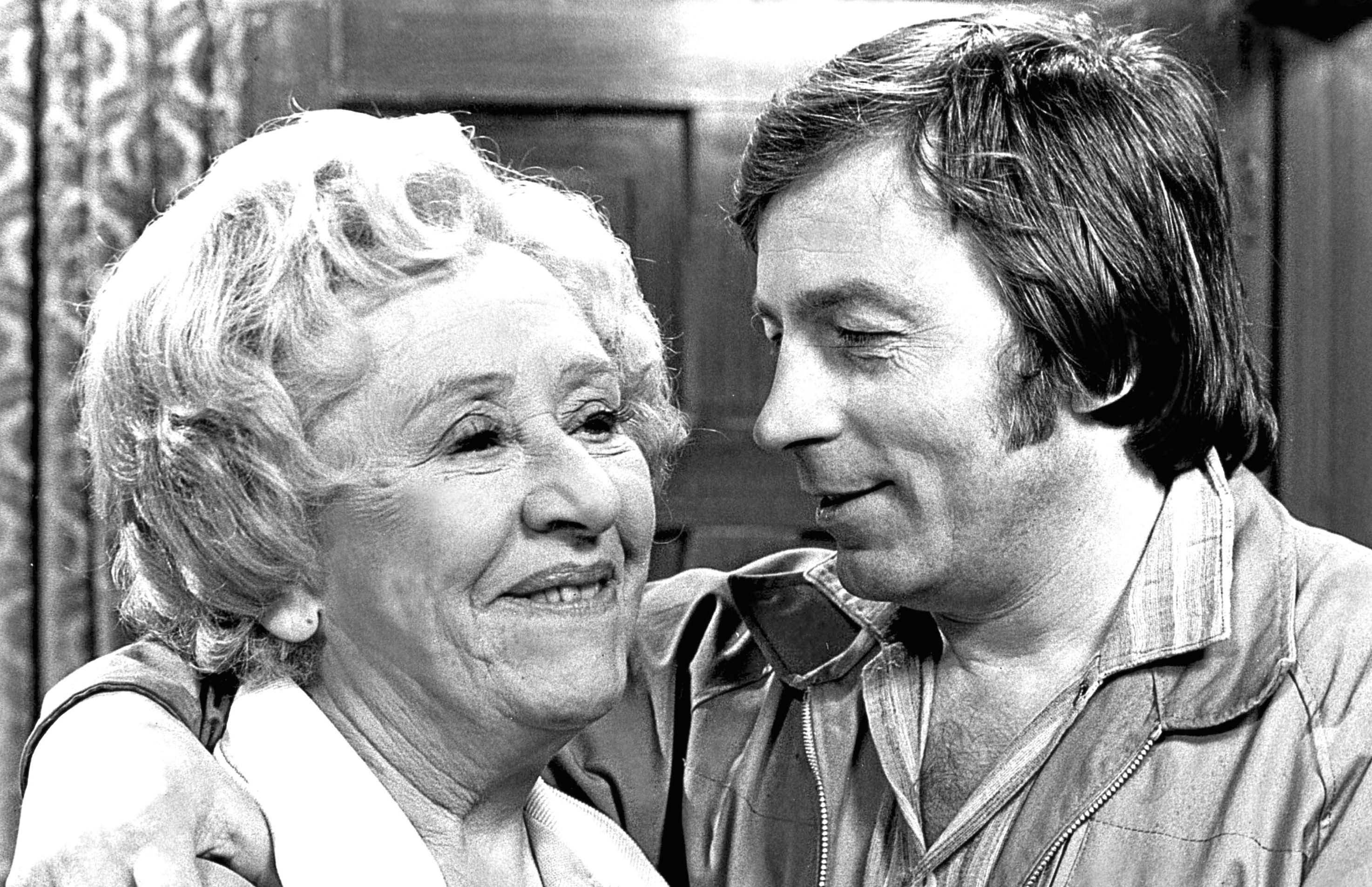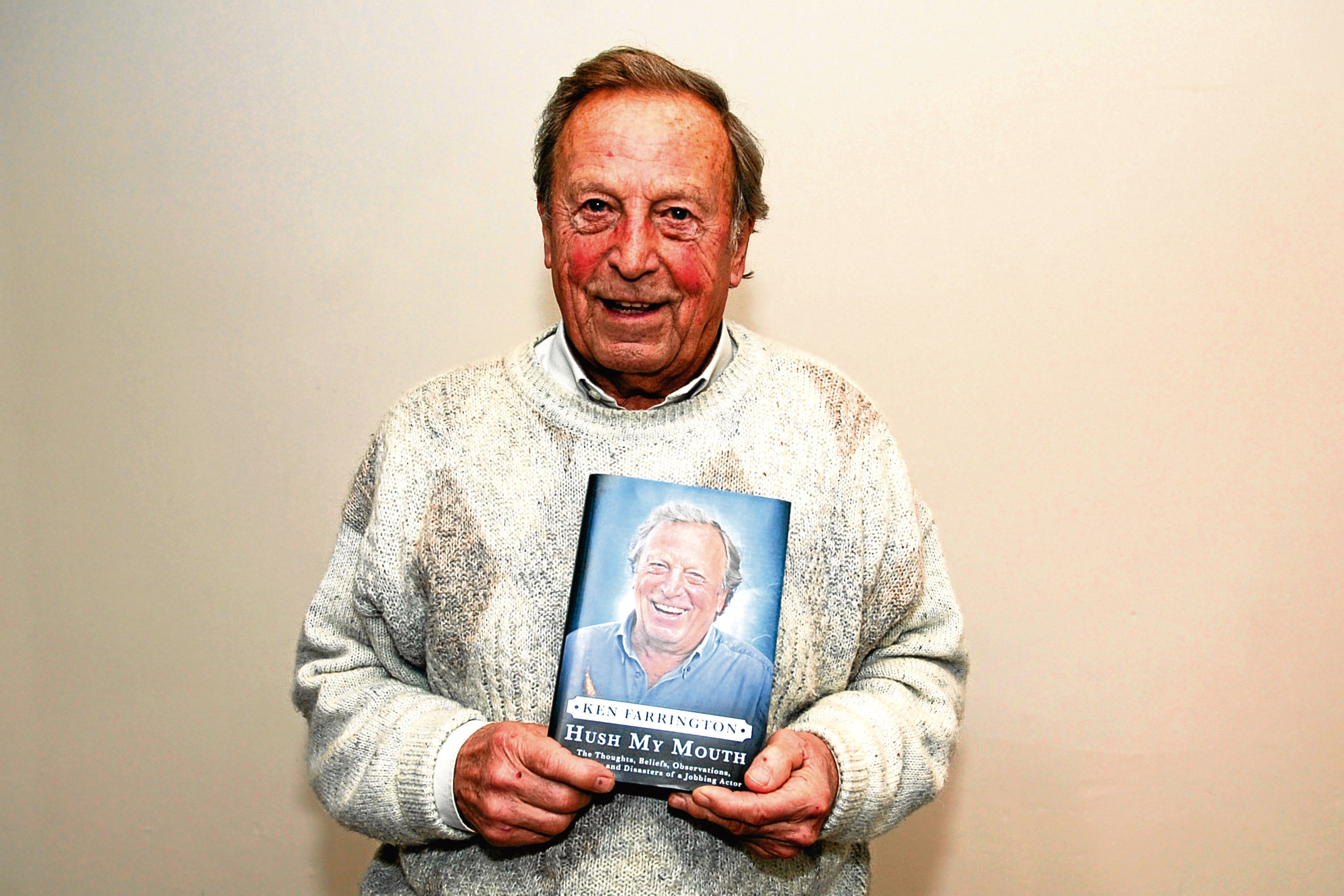
KEN FARRINGTON left Coronation Street because he was fed up becoming the JR of Weatherfield.
But he was more than happy to be the evil Ewing’s equivalent in Emmerdale!
Ken spent almost a quarter of a century on and off playing Billy Walker, the “wayward son” of original Rovers Return landlady Annie Walker.
“Unfortunately, Billy changed,” says Ken, who’s 82 this month. “This was one of the things that caused me to stop playing him. I found it became rather difficult.
“The JR thing in Dallas was very, very strong. His character was so evil, they were just trying to see how evil he could be the next week!
“For some reason, I think the producers decided they wanted a JR-type character in the Street. For me, the charm of Billy — if there was any charm — was he was a working-class lad in a garage.
“Some things he did were good, some were bad, but he was basically just ducking and diving and likeable underneath it all, I like to have thought. A bit of a loveable rogue.
“Doris Speed, who played Annie and who’d left by the time they started to do this evil business, said to me: ‘You’ve got to protect the part,’ which I understood.
“She’d protected her part very well. If anything was wrong and didn’t fit in with the way she played Annie, she’d change it or get somebody to change it.
“I tried to do the same but they were adamant they wanted to change the character.
“I saw the producer and he said: ‘You become so identified with your part that you lose the line between you and the character, and you suddenly decide you don’t want to be unpopular and you don’t want to do anything nasty because you’ve crossed over that line.’
“But it wasn’t that I wanted to be a popular character. I just thought Billy had changed so dramatically, it wasn’t the same person. But they continued with it.
“I did my best and tried to play it with at least some of the older character there, but that backfired because there was one writer who said he put me in awful positions because he liked to see the way I’d try to get out of them!”
Exactly 20 years after leaving the Street, Ken took on the role of Emmerdale’s Tom King, who came a cropper after being pushed out of a window in a long-running “whodunnit” storyline similar to Dallas’s “Who shot JR?”.
“Yeah, except I don’t think Tom was as black as JR — he had grey areas as well,” says Ken. “That character worked for me. He was a businessman, he had three boys that he was having difficulty keeping under control.
“With Billy, when they tried to change his character, I found that was wrong but I was quite prepared to be the evil one in Emmerdale! I don’t mind that.
“They always say villains have the most fun, and indeed I did!”
Ken originally auditioned for the role of Dennis Tanner, Elsie’s troubled son, in Corrie, but does he now, looking back, think losing out to Philip Lowrie was a stroke of good luck?
“That’s a very interesting question!” he smiles. “I suppose it was because, looking at the advantages, I got on better with Doris Speed than I would have with Pat Phoenix.
“Doris was almost like a second mother.
“Career-wise, I don’t think that would have altered because had I played Dennis, I’d still have had the same desire to get out after the first seven months, while Philip stayed in for many years.
“I think he found it quite difficult when he first came out to get work because you get associated with that one part.
“People don’t want to think of you as anything else.
“As far as the Street is concerned, if I then went into something else, the audience immediately thinks: ‘Oh, it’s Billy,’ and that destroys all the work the other actors have done in creating whatever the background was for the other thing you’re doing.
“I spent a quarter of a century as Billy but it wasn’t solid. I suppose if you work it out, over those 25 years, I probably did about five years.
“I kept leaving because I didn’t become an actor to play one part. I became one because I enjoyed playing a variety of parts and pretending to be a variety of different people, so I found it very frustrating.
“I always wanted to have a bit more to do and quite frequently, you spent weeks going in and you weren’t part of the storyline — you were behind the bar with just a couple of lines.
“I found it very frustrating as an actor to keep the enthusiasm going for just a couple of words.
“But that’s the way soaps operate, you can’t be a lead actor in the storylines every week.”
Ken was involved throughout Corrie’s “Golden Age”, and from the off, it was obviously a show dominated by strong women.
He laughs: “It was a matriarchal society! There were those three women who vied to have this star part — Doris Speed, Pat Phoenix and Violet Carson, who played Ena Sharples.
“It was obvious at the beginning that there was great competition between those three as to which one was going to be the boss.
“The strength of the Street was that all three managed to keep that going.
“They’d all go into the producers and fight for their characters, and as you’d expect, Pat Phoenix was probably the one that did it most.”
Ken Farrington’s autobiography Hush My Mouth is available from www.fantompublishing.co.uk, priced £19.99.

Enjoy the convenience of having The Sunday Post delivered as a digital ePaper straight to your smartphone, tablet or computer.
Subscribe for only £5.49 a month and enjoy all the benefits of the printed paper as a digital replica.
Subscribe